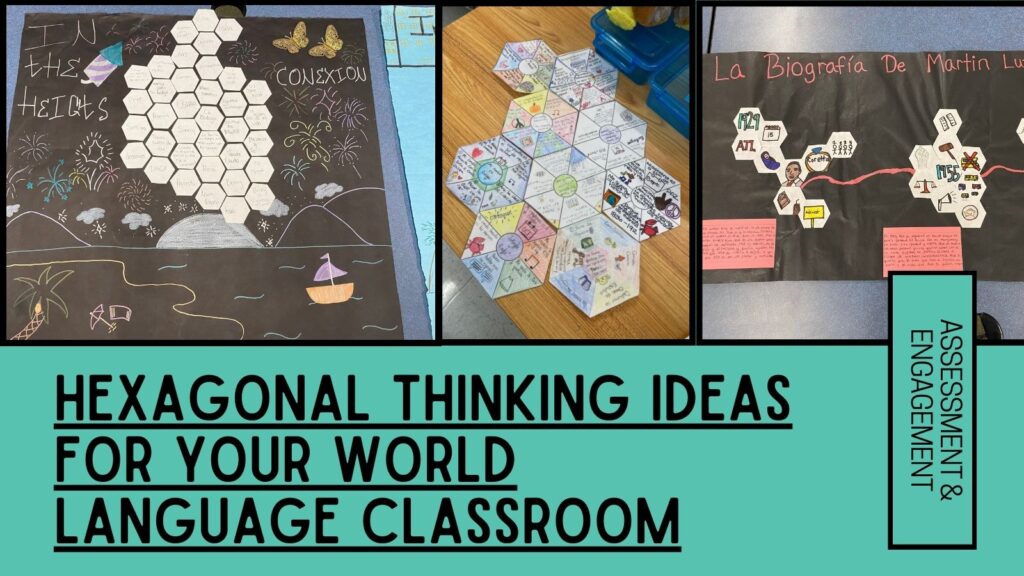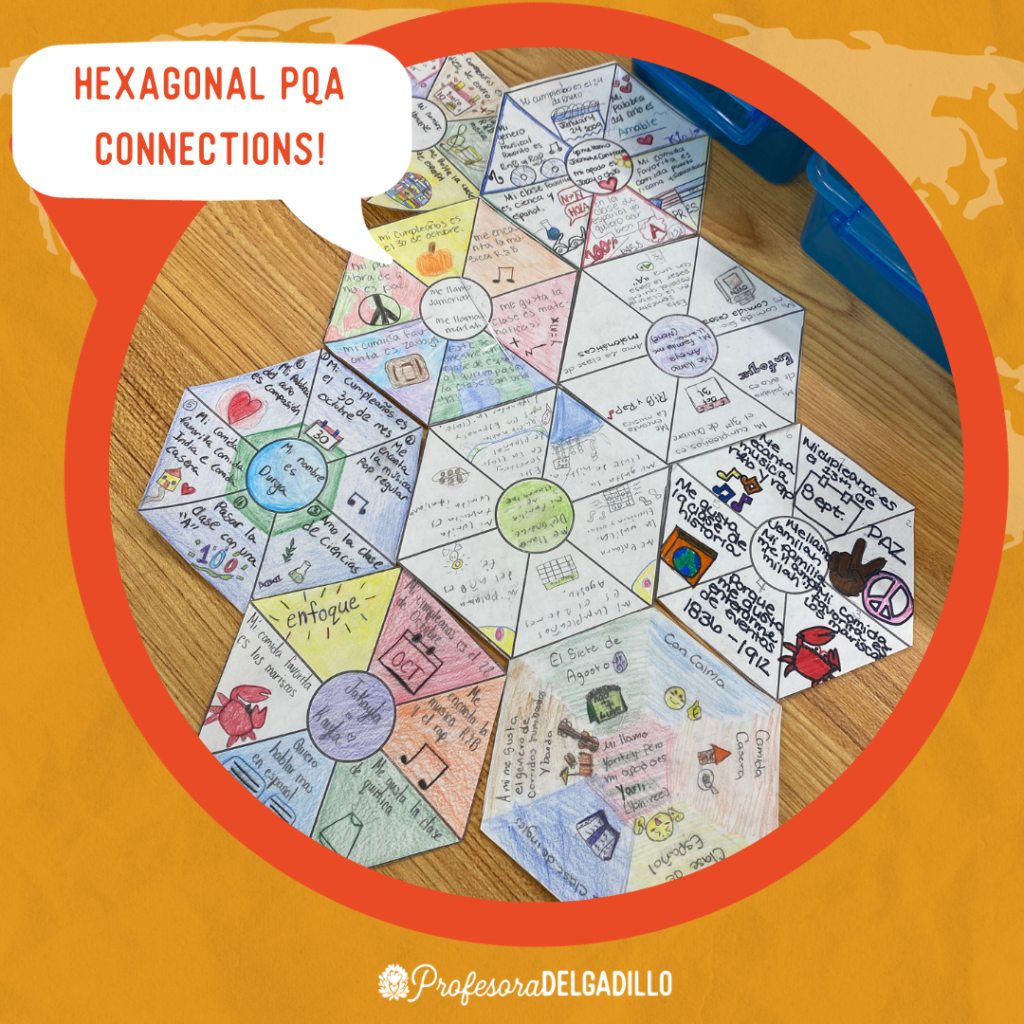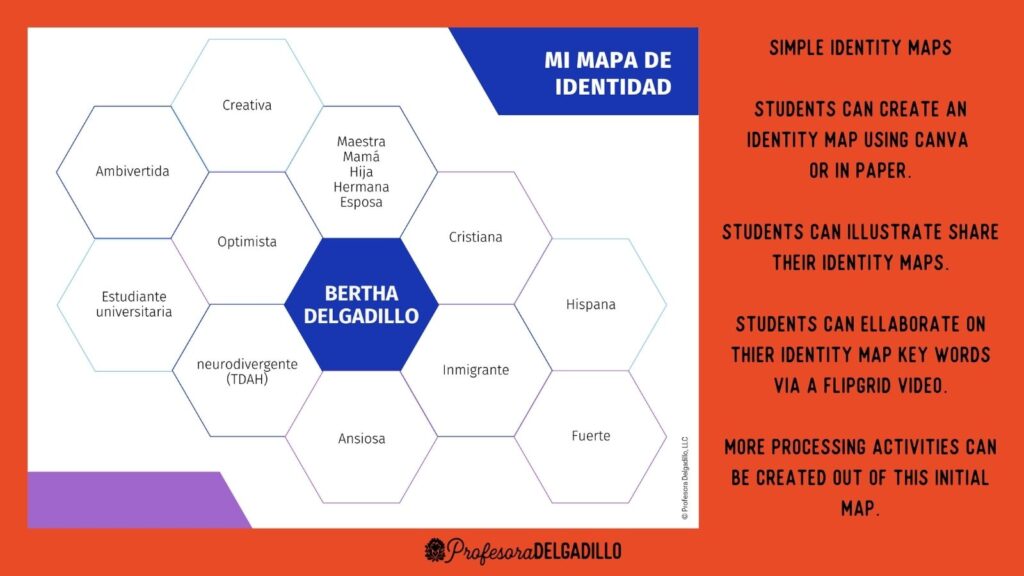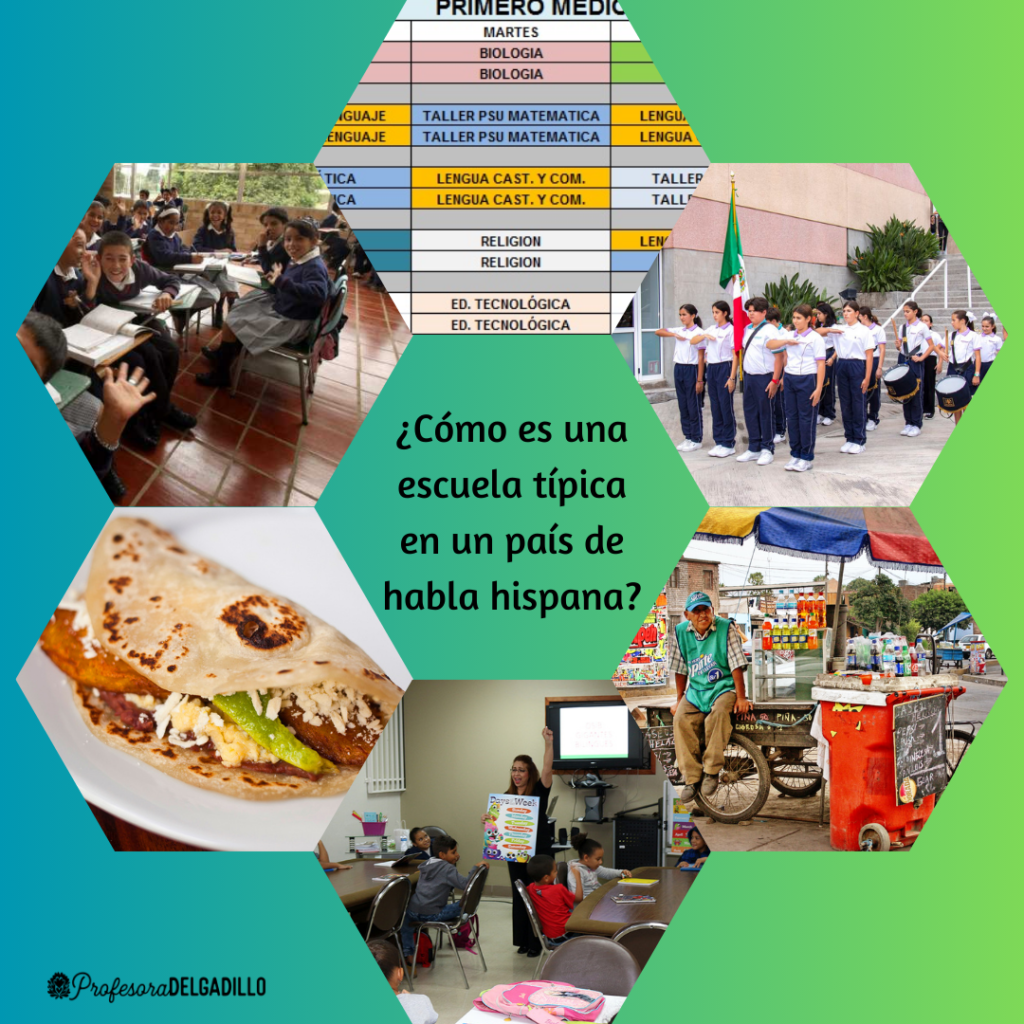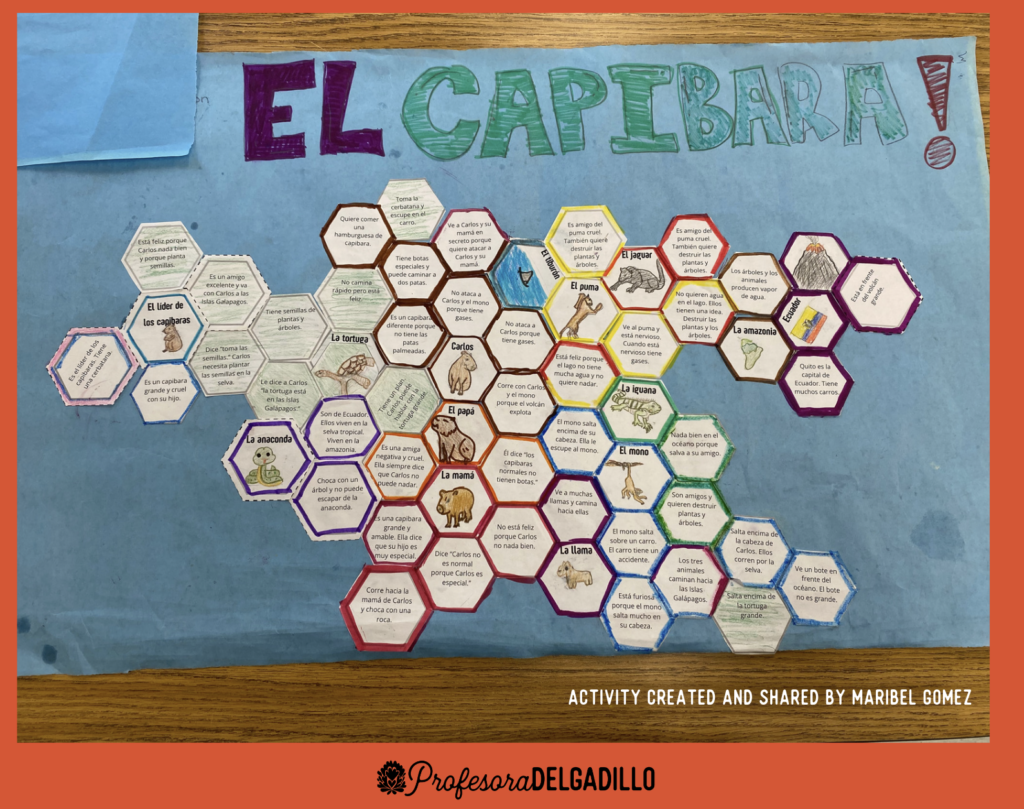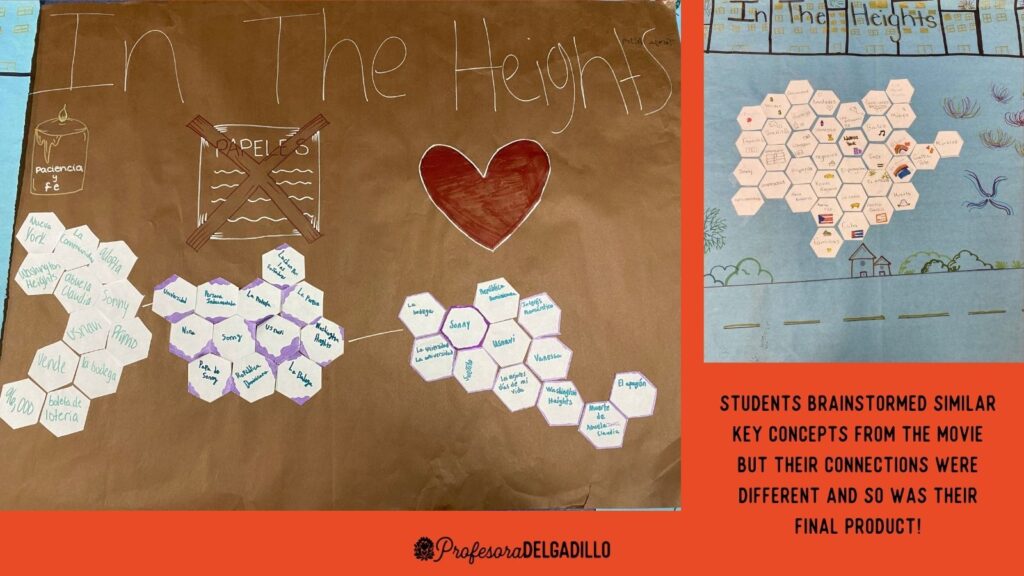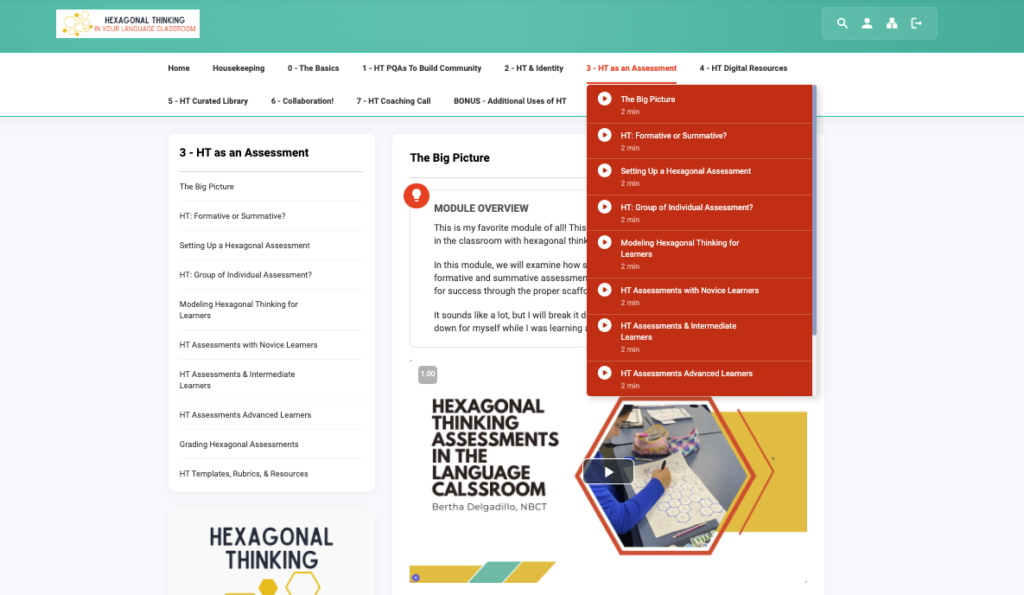Hexagonal thinking is a thinking strategy inspired by the business world, but it is now used by many classrooms.
Hexagonal thinking involves students recording ideas, questions or facts on hexagonal tiles and arranging them so that related tiles are next to each other, essentially building a web of connections.
Benefits of Hexagonal Thinking in the World Language Classroom
There are so many benefits to bringing hexagonal thinking to your Spanish class (or any language class):
- Concept Visualization: It helps students visualize and organize concepts.
- Interconnected Ideas: Encourages students to connect ideas like puzzle pieces.
- Critical Thinking: Promotes critical thinking by deciding where and why to connect hexagons.
- Engagement: Keeps students engaged through a hands-on, interactive approach.
- Versatility: Applicable across various language teaching approaches, themes, and forms input.
- Debate and Discussion: Sparks debate and discussion about idea connections.
- Creative Learning: Fosters creativity and problem-solving skills.
- Web of Knowledge: Builds a web of knowledge in the classroom.
- Concept Retention: Enhances concept retention through visual learning.
- Student Collaboration: Can be used for group activities, encouraging collaboration.
- Adaptability: Can be adapted for different proficiency levels.
- Active Participation: Encourages active participation.
Hexagonal Thinking Ideas for the Language Classroom
1) Hexagonal connections through the use of personalized questions and answers.
I blogged about this particular way of integrating hexagonal thinking in the world language classroom previously. You can read all the details in this blog post and see how it comes together in the following image.
2) Identity Maps with Canva and/or Paper
This is a very simple yet powerful hexagonal activity that can be done with Canva (and even with paper) to get to know learners and to continue to strengthen your class community.
3) Hexagonal Thinking for Essential Questions and CAN DO Statements
Students can also unleash their creativity with CANVA and create visual hexagons to answer essential questions and show what they have acquired and what they can do with the language.
4) Class Novel Processing & Reviews
There is a variety of ways this thinking strategy can work with class novels that provide further processing opportunities. Additionally, this thinking strategy can be used as a way to review the entire novel prior to the final test as in the example below.
5) Hexagonal Thinking As A Form of Assessment
My favorite, and in my opinion, the most powerful way to use this strategy in the language classroom is to use it as a form of assessment. This can be done toward the end of any unit. You will have to guide your learners through it, but it is a beautiful process as they will explain their connections in spoken or written form. This can be done individually, as a group, or a mix of the two.
Ready to Ramp Up The Way You Do PQAs, Support, Assess learners, and Promote Critical Thinking Without Leaving the Target Language?
If you are more of a visual learner, in my latest YouTube video, I walk you through two of these hexagonal thinking ideas (PQAs and Assessments) with detailed examples.
If you are wondering…
- Where do I start?
- What type of templates do I need?
- What kind of structures/instructions should I prepare to support my students through these activities
- How do guide my students through making these connections?
- Should I assign these hexagonal thinking activities individually or a a group?
- How can I guide my learners through these activities digitally?
- What type of scaffolds do I need to do this with all levels?
- How do I grade these activities?
You can get join this course today with a special discount by using the code BLOGREADER at checkout! The code will expire on Sunday, October 15th, 2023 at 11:59 PM ET.

